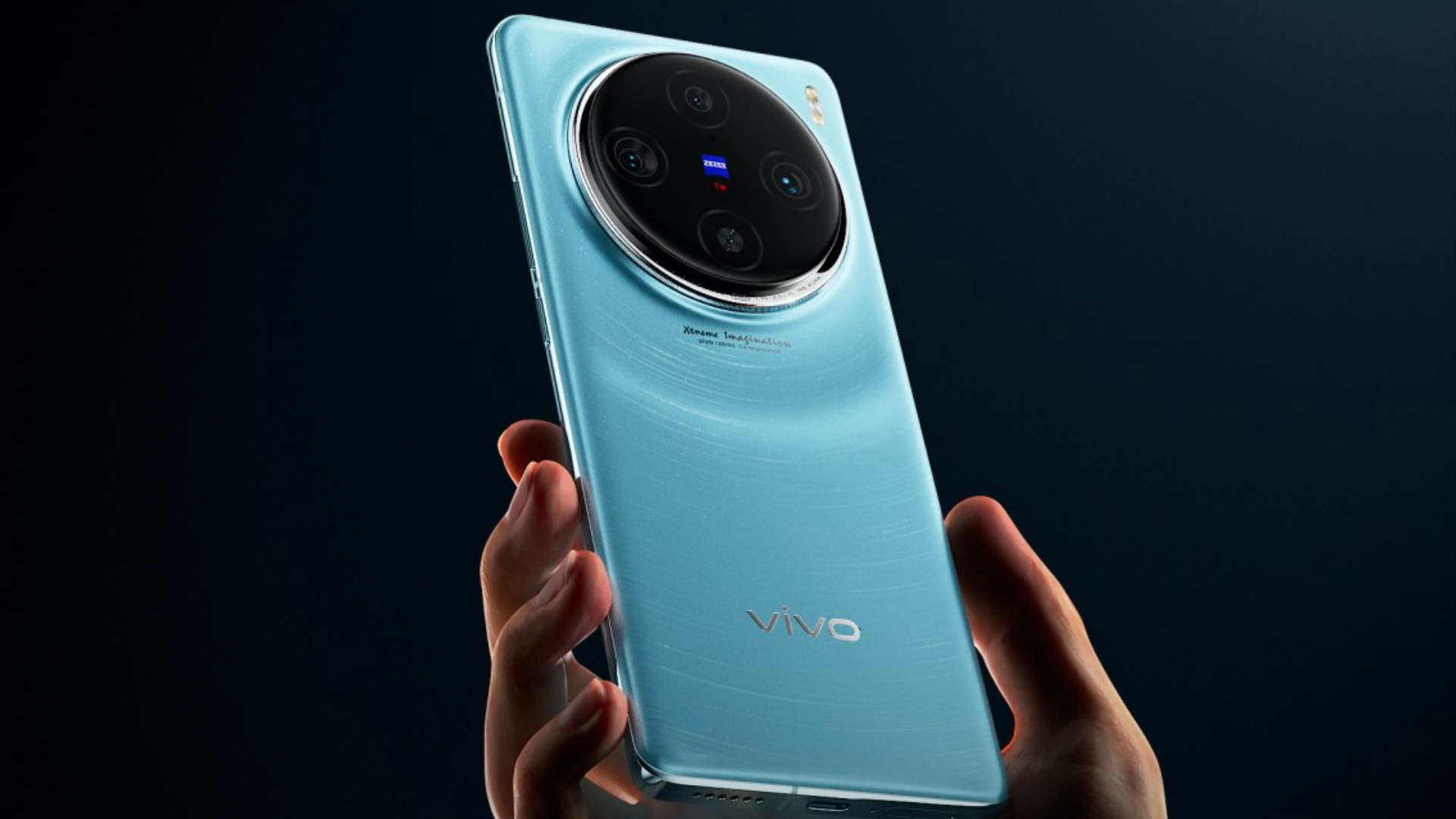In my opinion, the Xiaomi Mi 11 Ultra, wasn’t simply the company’s best effort in the premium market; the phone also clearly outperformed rival models. In fact, I recall preferring the phone to the Galaxy S21 Ultra, during my time with it, partly because Xiaomi’s model was powered by a faster processor.
It seems sensible that Xiaomi will have to fight tooth and nail to distinguish apart in 2022. The Xiaomi 12 Pro, which is crammed full of amazing features, comes into play in this situation. So, should you buy Xiaomi’s newest model or save your money for another flagship phone? Let’s find out, then.
Verdict
There are many things about the Xiaomi 12 Pro that are excellent, from its stunning screen to its excellent SoC. However, the device runs rather hot and the helping cameras don’t do it any favours. Nevertheless, the Xiaomi 12 Pro performs better than it does worse, making it a respectable choice in its price range.
The facts
The Mi 11 Ultra’s design caused quite a stir when it was unveiled by Xiaomi, and for good reason. On the one hand, the smartphone came with a unique OLED screen at the rear that served as a viewfinder for taking selfies with the phone’s main camera and also showed the time and app alerts. On the other hand, the smartphone’s enormous camera module and sheer weight required two hands to use it at all times. To fit the phone comfortably in your pockets, you’d actually need to put on a pair of loose pants, considering it weighs 234 grammes and measures 8.34mm.
While rumours of a Xiaomi 12 Ultra, which is rumoured to be very large as well, are rife online, the company’s current champion, the Xiaomi 12 Pro, couldn’t be more different. For starters, the gadget weighs only 205 grammes and is quite slim. As a result, using the phone comfortably only requires one hand. More crucially, the Xiaomi 12 Pro’s design is more subdued than the Mi 11 ultras. Instead, the device charms customers with its elegant chassis, which is equally at home in a boardroom as it is in a neighbourhood diner.
Indeed, the phone’s graphite colourway speaks volumes about the handset’s overall design – the matte grey finish appears elegant, but under ideal lighting, the back of the phone shimmers ever so slightly and imitates a starry night, adding a bit of flair to the phone’s otherwise understated aesthetic. And, for those who want to stand out, even more, the handset is also available in two bright colours: Purple and Blue.
It’s also important to discuss the smartphone’s camera module, and I particularly appreciate how the camera array has been divided to highlight the various sensors. To top it all off, the Xiaomi 12 Pro’s glass-and-metal construction, gives the device a fantastically premium feel in the palm. Particularly on the phone’s back, a matte texture that feels silky to the touch is used. A layer of Corning’s Gorilla Glass Victus on the front and Gorilla Glass 5 on the back of the gadget should help it resist dents and scratches to some extent. Except for the Xiaomi 12 Pro, I’ve never wanted to use a phone without a case so much.
But in any case, I utilised the included TPU case because I was using the 12 Pro, which is about as slick as they get. Unfortunately, unlike rival devices, the smartphone doesn’t support any certified IP ratings either, which will undoubtedly hamper its argument. The unit’s in-display fingerprint sensor and facial recognition software worked well, which is a plus. Additionally, the phone’s highly precise haptics will make you like typing long paragraphs on it.
Mind you, the smartphone’s design is equally as alluring as its display. The Xiaomi 12 Pro has a 6.73-inch, WQHD+ AMOLED display with a maximum brightness of 1,500 nits. A further feature of the phone is that the screen softly curves at either end, hiding the bezels and enabling an even more immersive video consumption experience. The cherry on top is that the Xiaomi 12 Pro is one of the select few gadgets that complies with the Dolby Vision HDR format. As a result, you can watch your favourite TV episodes on Netflix in Dolby Vision HDR, including The Witcher, Our Planet, and others.
Not only that, but the screen also supports LTPO technology and refreshes at a rate of 120Hz. To handle static or moving information, the display will automatically slow down its refresh rate, saving both power and prolonging the life of the device. During my time with the phone, I didn’t encounter many refresh rate problems; animations seemed quick, UI transitions felt natural, and the panel easily transitioned to various media-focused apps like Instagram and Twitter. I would have preferred to see less colour distortion towards the screen’s edges if anything. As it is, a bluish tinge may be seen on the panel when looking at the screen from an angle. On the plus side, each channel of the device has a superb speaker configuration with two tweeters and two woofers. The array has plenty of stereo separation and can be very loud. All things considered, the Xiaomi 12 Pro may be the greatest smartphone in its price range for watching movies and videos.
Nevertheless, I observed that the phone ran a little bit hotter than other Snap 8 Gen 1 gadgets. Xiaomi says the smartphone comes with a special vapour chamber for cooling, yet as soon as I started playing a resource-intensive game like BGMI or used the camera app for a while, the device’s temperature shot through the roof. Evidently, the Xiaomi 12 Pro’s cooling system isn’t functioning as promised, which is likely the cause of the device’s significant CPU throttling. In other words, the device throttled to 60% of its maximum capability, and it also scored a 47.7% stability rating in the Wildlife Extreme test by 3D Mark. In contrast, the Samsung Galaxy S22 Ultra’s performance in the throttling test dropped to 68 per cent of its maximum level, while in the Wildlife Extreme Stress test from 3D Mark, stability averaged 60.8 per cent over 20 cycles.
All things considered, the Xiaomi 12 Pro is a competent performer, albeit it may be risky to use the device’s power for extended periods.
Now, despite my best efforts, I was unable to get the Xiaomi 12 Pro to operate for an entire day on a single charge. Your results may vary, particularly if you choose to operate the phone in balanced mode or cap the display refresh rate. However, with the gadget running in performance mode and the display set to refresh at 120Hz, by evening I was hunting for a charging port. Fortunately, the smartphone comes with a 120W brick that can quickly charge the device.
Software-wise, Android 12 is loaded first on the Xiaomi 12 Pro, followed by MIUI 13. Customers considering the phone will find a host of helpful features, like a safe folder and an integrated screen recorder, in addition to the custom skin, which needs no introduction. However, if you decide to use a specialised app like Nova launcher on the phone, you’ll have to deal with on-screen navigation buttons because the UI doesn’t work well with third-party launchers. This is frustrating because neither the company’s official launcher nor third-party icon packs are supported. Additionally, the phone comes with some bloatware, which may turn off shoppers eager to spend money on a high-end smartphone.
The Xiaomi 12 Pro doesn’t leave anything to chance when it comes to cameras. The smartphone is powered by three 50MP sensors: a 50MP telephoto camera, a 115-degree field-of-view Samsung JN1 UW sensor, and a Sony IMX707 primary sensor. The gadget includes an up-front 32MP camera for selfies. Remember that the smartphone’s primary camera also has OIS functionality. So, are the Xiaomi 12 Pro’s cameras of the highest calibre? So, if you frequently use the primary camera on your phone to shoot pictures, you’ll probably get by just fine with the Xiaomi 12 Pro. In fact, I found that the Galaxy S22 Ultra’s 50MP camera had less pixel detail than the 12 Pro’s 50MP camera. Now that I am working on a thorough comparison of the two, which should be up soon, allow me to amuse you in the meantime with the split images attached below.

Xiaomi 12 Pro (right), Samsung Galaxy S22 Ultra (left)
But the result from the 12 Pro is a crisper image with superb detailing all around. Therefore, the Xiaomi 12 Pro clearly outperforms the Galaxy S22 Ultra, whether it be in terms of the sharpness of the corners of the objects in the frame or the detailing close to the centre of the image. Additionally, I discovered that Samsung’s photos frequently have a slight oversharpening when I took a closer crop.
Putting comparisons aside, the primary sensor on the Xiaomi 12 Pro takes fantastic pictures during the day. The images’ colours lean toward brighter tones, but the sensor extracts every last bit of detail from a scene. Additionally, although producing a photo with a lot of contrast, the smartphone also leaves some shadow detail. Low-light photographs also capture the same scenario, with the 12 Pro producing excellent details while minimising noise. I was particularly impressed with how the phone handled instances of lens flare, and you’ll see that in the low-light photos attached above, no extra glares are coming from the street lamps.
However, the smartphone’s extra sensors could be a little better. The telephoto sensor, for example, only provides a meagre 2x optical zoom. Even yet, the Samsung Galaxy S22 Ultra’s telephoto sensors produce photographs that much outperform the ones taken by the device. Similarly, the ultrawide sensor produces subjects that are placed close to the boundaries of the frame rather inadequately. Additionally, the sensor doesn’t have the biggest field of view (FoV), unlike competing products. On the other side, the selfie camera takes stunning, highly detailed pictures of the user. Also rendered properly is the subject’s skin tone.
Final Conclusion
Retailing at Rs 62,999, the Xiaomi 12 Pro offers a lot of special features for the money. The smartphone’s gorgeous display and amazing quad-speaker arrangement, for starters, make for an exceptional media consumption experience. Additionally, the Xiaomi 12 Pro is incredibly quick, and it has a strong main camera that takes excellent pictures.
Nevertheless, the smartphone has flaws, and I had hoped for a better set of auxiliary cameras to come with it. Hardcore gamers may consider the device’s high temperature to be a deal-breaker. Even though MIUI 13 has a lot going for it, I wish the manufacturer had included more advanced customisation capabilities with the gadget. Overall, the Xiaomi 12 Pro is a solid smartphone that, with a few software upgrades, may live up to (or perhaps exceed) a user’s expectations.
Pros:
Elegant style
Competent performer
Fantastic primary camera
Wireless and wired charging at rapid rates
Cons:
Comes loaded with a tonne of bloatware.
Unrated IP
Poor telephoto sensor,
Overheated SoC
Key Specs:
- Snapdragon 8 Gen 1
- Octa-core (3 GHz, Single Core + 2.5 GHz, Tri core + 1.8 GHz, Quad core)
- 8 GB RAM
Display:
- 6.73 inches (17.09 cm); AMOLED
- 1440×3200 px (521 PPI)
- 120 Hz Refresh Rate
- Gorilla Glass Protection
- Bezel-less with punch-hole display
Rear Camera:
- Triple Camera Setup
- 50 MP Wide Angle Primary Camera
- 50 MP Ultra-Wide Angle Camera
- 50 MP Telephoto Camera
- Dual-color LED Flash
- 8k @24fps Video Recording
Front Camera:
- 32 MP Wide Angle Lens
- Full HD @30 fps Video Recording
Battery:
- 4600 mAh
- 120W Hyper Charging v4.0; USB Type-C port



.jpeg)





















